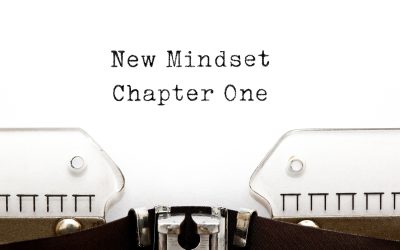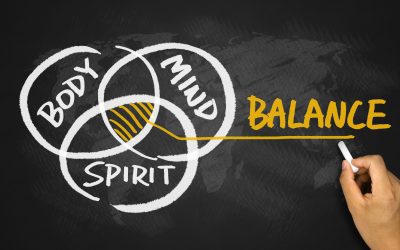What is Practicing Perspective?

It’s The White Foamy Stuff That Can Snuff Out The Dumpster Fire In Your Body Set By Cortisol
Perspectives are not only seen with the eye, they are also held in the mind; they’re often deeply rooted beliefs. So practicing perspective is an activity of regulating the mind consciousness muscle – a.k.a. Dumpster Fire Prevention.
In today’s modern world, we often experience harmful stress – or suffering – from the action of just thinking. Crafting stories, drawing conclusions, making assumptions, as a sort of reflex, especially in times of stress or distress. We could choose instead to practice perspective by drawing focus of the mind away from narrative loops and stories and into what is known; often that is simply the breath as a known truth of the present moment.
It’s similar to many other curious idioms we have in our cultural lexicon:
- Think outside the box
- Take a birds-eye view
- Take a step back
- Look at the big picture
- Get out of the weeds
- Walk a mile in their shoes
- Take a deep breath
- Weigh your options
- Sleep on it
Practicing Perspective has real impact on your nervous system, down-regulating the stress response of hormones (I’m looking at you, Cortisol…), blood pressure and a whole host of other biological signals – from something that only exists in the mind.
FLEXIBILITY CAN BE EXPERIENCED IN THE MIND, NOT JUST THE HAMSTRINGS
When we perceive or believe something fearful that has not yet happened – something not currently rooted in reality, we suffer. When we constantly loop hurtful memories or replay unsettling situations in our mind that occurred in the past, we suffer.
Yoga, as my teachers have taught, is about the freedom and empowerment to change the lens by which we view our world, a situation, a relationship, problem, or person. When you shift your perspective into the present moment, a sense of empowerment arises, empowerment to just be, take a beat, take a breath, loosen the grip of anticipation, just relax into the body. a.k.a. chill.
And we want to be careful not to mistake practicing perspective with ‘analysis paralysis’. This process, rooted in the ancient wisdom of yoga, takes us out of our heads. It goes deeper.
Yoga Sutra 1.8:
विपर्ययो मिथ्याज्ञानमतद्रूपप्रतिष्ठम्
viparyayo mithyājñānamatadrūpapratiṣṭham
When we perceive something incorrectly (i.e. narrative loops or stories of the mind), it leads us to believe something false, which in turn causes mental disturbance – a.k.a. suffering.
Yoga Sutra 1.12:
अभ्यासवैराग्याभ्यां तन्निरोधः
abhyāsa-vairāgyābhyām tan-nirodhaḥ
The practice and the detachment (i.e. practice perspective, think outside the box, look at the big picture, take a deep breath, etc…) are the means to counteract these fluctuations.
Yoga Sutra 1.14:
स तु दीर्घकालनैरन्तर्यसत्कारासेवितो दृढभूमिः
sa tu dīrgha-kāla-nairantarya-satkārāsevito dṛḍha-bhūmiḥ
The practice becomes firmly established when it is consistent over time, without interruption, and with a quality of positive attitude and eagerness.
Becoming aware of the narrative in our mind and loosening our grip from one single perspective – even for just one minute of rapid fire alternative possibilities or fact-checking, is a powerful position to work from when managing fear, stress, anxiety, shame, anger and worry, as some of the more common unhealthy emotional signals activated in the mind.
Viktor Frankl, a Holocaust survivor and the author of Man’s Search for Meaning (1946), teaches us about that powerful position:
“Between stimulus and response there is a space.
In that space is the power to choose.
And in that choice lies our growth and our freedom.”
BOOM – mic drop. That space is the position from which to practice perspective.
What pulls us away from that choice is the influence of thoughts or stories looping in the mind, as we learn in the yoga sutras. When we live in a culture of ‘hurry up’ and social media soundbites and deadlines, we miss the opportunities to down-regulate our nervous system, to reduce stress, to find clarity.
PRACTICING PERSPECTIVE AS A LIFESTYLE REFLEX
Managing our mind/mindset is what happens when we change the lens in which we are currently using to view a situation or think outside the box. What are the variables that you can’t see or wouldn’t know from a single perspective? What might happen in the future (also unknown) that may change the trajectory of your current situation? How might the breath or movement change how you FEEL about a situation?
Often times, the lens we are using to view a situation was influenced by a report in the news, a TikTok influencer, that bossy-pants family member, or some other alleged ‘expert’ – some other source that is not ‘you’.
Biologically, we change our minds; spiritually, we reduce suffering.
When we pause to practice perspective, we are activating the neuroplasticity of the mind, which is the brain’s ability to reorganize itself by forming new neural connections – and possibly new beliefs.
- Cultural conditioning and emotional habits affect the neuron activity in the brain.
- Neurological wiring is simply how the brain develops, changes, and adapts over time, often in response to experiences, learning, and environmental or cultural factors.
Think of it like an app developer fixing bugs. We are empowered to react differently than usual, and over time we will feel differently, too – because of the brain’s response to the mind.
Sweetening your perspective practice with additional yoga tools, such as breath work and movement, will also help to activate the parasympathetic part of our nervous system. It reverses the body’s stress response by reducing cortisol – the stress hormone leading to disease, and allows you to ‘feel’ your own perspective. This is building your intuitive muscle by intentionally stepping into that overlap space of the Venn diagram linking body, mind and spirit.
The yoga sutras – especially sutra 1.8 – are a critical starting point to understanding how yoga is a direct path to reducing stress, strengthening relationships and experiencing more ease, or even better, more joy.
Practicing Perspective: A Bedtime Story
Mind says “Go this way, hurry up!”
“You can’t.
You don’t know.
You’re not that. This is the truth.” Mind chatters.
What is meditation?
Making The Case For This Devastatingly Simple, Totally Achievable, Modern Yet Ancient Mental Health Practice You Might Want To Rethink.
Meditation is a tool for the mind, just as a barbell is a tool for the muscle or a treadmill is a tool for cardiac training.
Cognitive Behavioral Therapy and the Yoga Sutras
As we look closely at one of the more common methods (practices) of psychology being Cognitive Behavioral Therapy (CBT), we can find a significant amount of overlap with Yoga.


